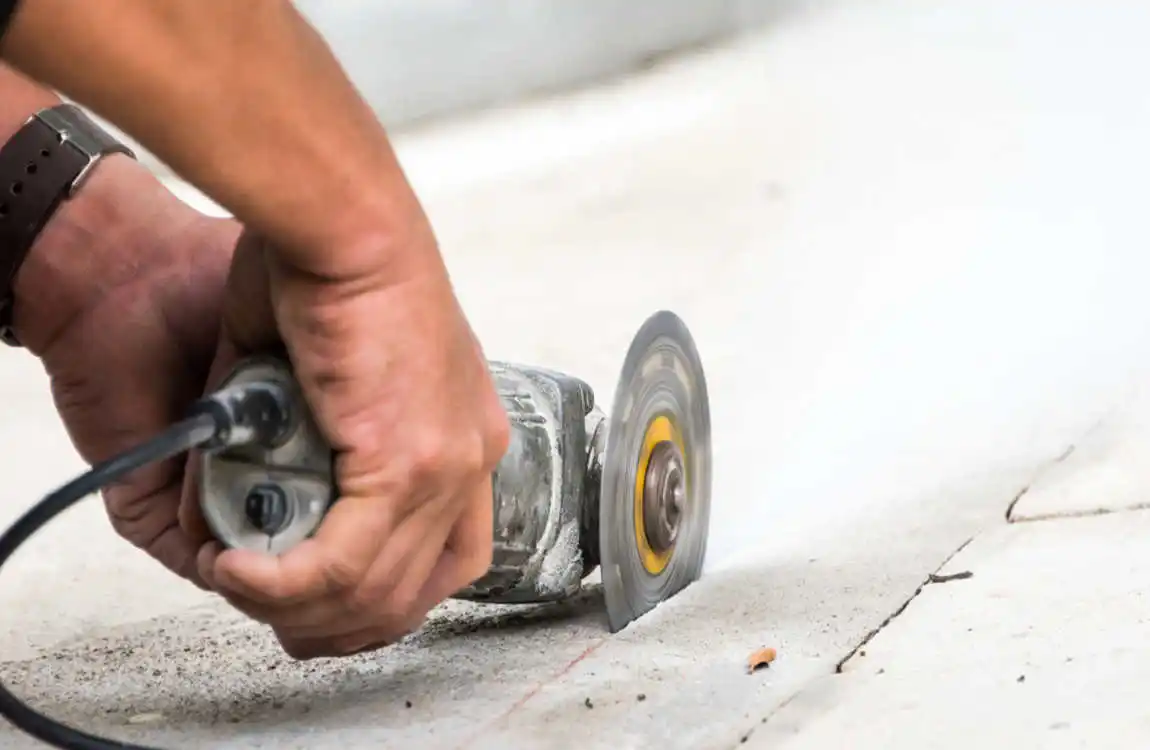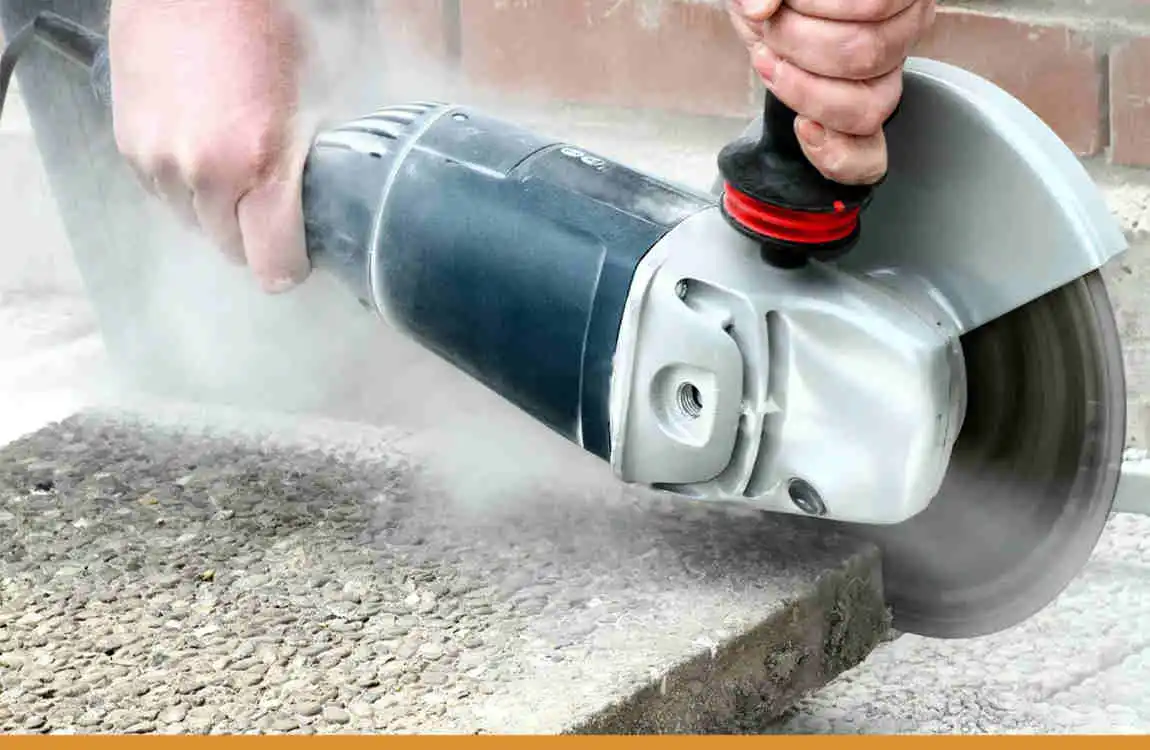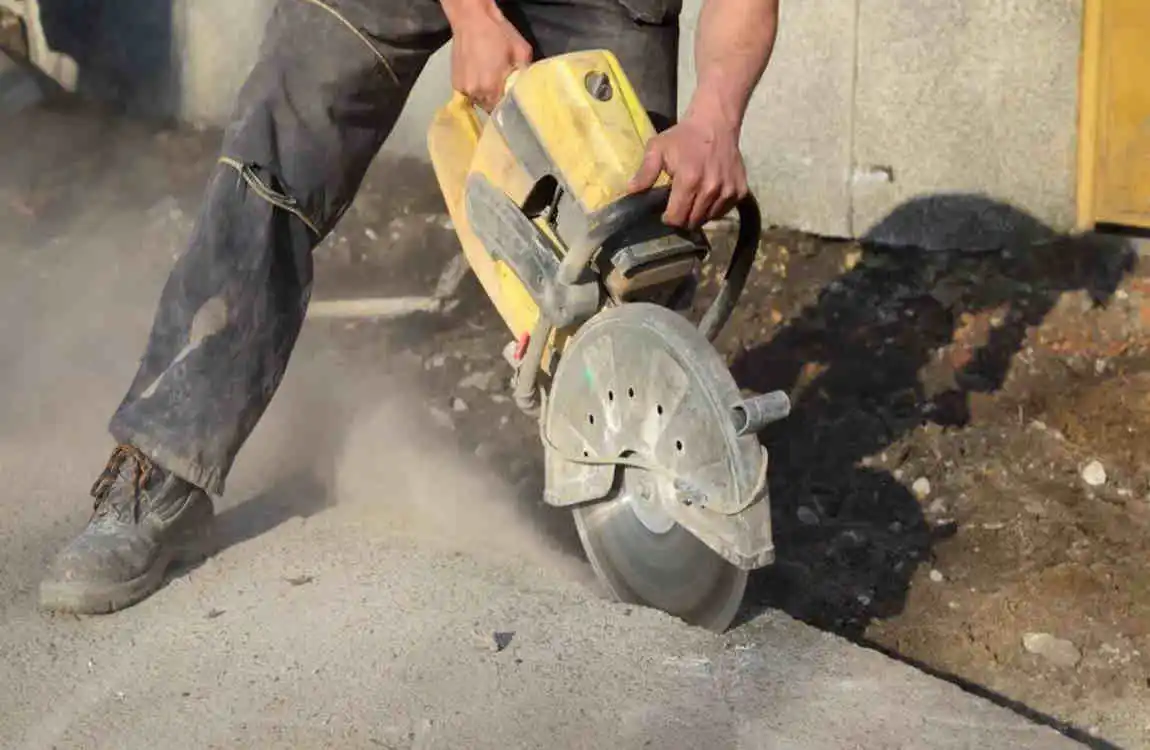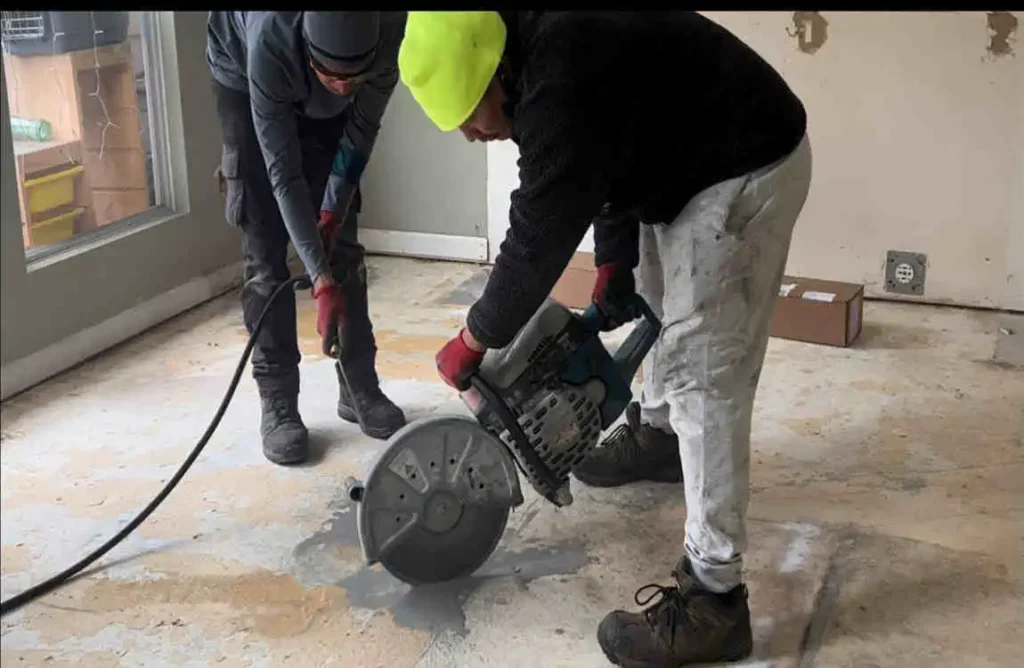Cutting a concrete slab to install or repair house plumbing can seem daunting, but with the right tools and steps, it becomes much easier and safer. This guide provides a simple, step-by-step approach to mark, cut, and remove sections of the concrete slab, allowing access for plumbing work while minimizing dust and damage. Whether doing it yourself or hiring professionals, these essentials will help ensure a smooth project from start to finish.
Understanding Concrete Slab and Plumbing Requirements

What Makes Concrete Slabs Unique in Home Construction
Your home’s concrete slab isn’t just a flat piece of rock – it’s an engineered plumbing system that supports your entire house. Most residential slabs range from 4 to 6 inches thick and contain steel reinforcement bars (rebar) that provide structural strength. This thickness and reinforcement make cutting through them a specialized task that requires more than just brute force.
The concrete in your slab has likely been curing for years, making it incredibly dense and complex. Unlike fresh concrete, which is relatively soft, aged concrete develops a compressive strength that can exceed 3,000 pounds per square inch. This hardness protects plumbing but also makes it challenging to access when repairs are needed.
Why You Might Need to Cut Your Slab
There are several scenarios where cutting into your concrete slab becomes necessary. Pipe failures are the most common reason – when a water line breaks or a sewer pipe collapses beneath your slab, you have no choice but to cut through to reach the problem. These situations often announce themselves through unexplained water bills, damp spots on floors, or the sound of running water when all taps are off.
Home renovations present another common scenario. You could add a bathroom, relocate your kitchen, or install a floor drain in your garage. Each of these projects requires running new plumbing lines, and when your home sits on a slab foundation, that means cutting through concrete to create pathways for pipes.
Sometimes, you might need to upgrade aging plumbing systems. Older homes often have galvanized steel or cast iron pipes that deteriorate over time. Replacing these with modern PVC or PEX piping requires accessing the existing lines beneath your slab.
Understanding Your Plumbing System Layout
Before you even think about picking up a saw, you need to understand what’s hiding beneath your concrete. Your slab likely contains a network of water supply lines, drain pipes, and sewer connections. Supply lines typically run from your primary water connection to various fixtures throughout your home. These are usually smaller-diameter pipes carrying pressurized water.
Drain and sewer lines are larger and rely on gravity to function correctly. They slope gradually toward your primary sewer connection, and this slope is critical for proper drainage. When cutting your slab, maintaining these slopes becomes essential for your house plumbing to work correctly after repairs.
Safety and Legal Considerations
Here’s something many DIYers overlook – you might need permits before cutting into your slab. Most municipalities require permits for plumbing work, especially when it involves structural modifications like slab cutting. Contact your local building department to understand the requirements in your area.
Safety isn’t just about following rules; it’s about protecting yourself and your property. Concrete dust contains crystalline silica, which can cause severe lung damage if inhaled. Additionally, cutting concrete can produce a deafening noise that can permanently damage your hearing without proper protection.
Tools and Materials Needed for Cutting Concrete Slab

Essential Cutting Tools for the Job
Let’s talk about the star of the show – your concrete cutting saw. You have several options here, and choosing the right one can make the difference between a smooth project and a frustrating ordeal. A walk-behind concrete saw works best for significant, straight cuts. These powerful machines can cut up to 12 inches deep and create house clean, professional-looking cuts.
For smaller jobs or tighter spaces, a handheld circular saw with a diamond blade might be your best bet. These saws are more maneuverable but typically only cut 2-3 inches deep, requiring multiple passes for thicker slabs. Remember, standard wood-cutting saws won’t work here—you need equipment specifically designed for masonry work.
Don’t overlook the rotary hammer drill in your arsenal. This tool becomes invaluable for breaking up cut sections and creating starter holes. Unlike regular hammer drills, rotary hammers deliver powerful percussive blows that can break through the toughest concrete. They’re also perfect for precision work around existing pipes.
Preparation Before Cutting

Accurate Marking and Measurement
Success in concrete cutting starts with precise marking. Begin by determining exactly where your plumbing needs to run. Use your home’s blueprints if available, or work with a plumber to map out the optimal path. Remember, the shortest distance isn’t always the best – you need to consider existing utilities and structural elements.
Transfer your measurements to the concrete using a chalk line for straight cuts. Snap the line multiple times to ensure visibility, as concrete dust will quickly obscure light markings. For curved cuts or corners, use a permanent marker or paint pen to create clear, visible lines.
Double-check all house measurements before proceeding. The old carpenter’s adage “measure twice, cut once” becomes even more critical when working with concrete. A mistake here can lead to expensive repairs and potential structural issues.
Detecting Hidden Hazards
Before your blade touches concrete, you absolutely must know what’s beneath the surface. Hitting a live electrical wire or gas line can be fatal, while cutting through existing plumbing can lead to expensive repairs. This is where detection tools become invaluable.
A quality concrete scanner or ground-penetrating radar (GPR) unit can identify pipes, conduits, and rebar beneath your slab. These tools aren’t cheap, but many equipment rental shops offer them. Even basic stud finders with deep scan modes can help identify metal objects in concrete.
Mark all detected objects with spray paint, using different colors for different utilities. Create a buffer zone around these markings – aim to stay at least 2 inches away from any detected object when cutting.
Workspace Preparation and Protection
Remove all furniture and valuables from the work area. Even with wet cutting, some dust will become airborne. Cover any remaining items with heavy-duty plastic drop cloths and secure them with tape.
Set up proper ventilation if working indoors. Open windows and use fans to create airflow that directs dust away from living spaces. Position exhaust fans to blow air outside, and consider using air scrubbers if available.
Water Management for Wet Cutting
If you’re using wet cutting techniques (highly recommended), you need a water management plan. Determine where the water will flow and how you’ll contain it. Concrete cutting uses significant amounts of water – expect 1-2 gallons per minute during active cutting.
Create barriers using sandbags or foam backer rods to direct water flow. Have a wet/dry vacuum ready to manage pooling water. If working indoors, protect the flooring in adjacent rooms and ensure water won’t seep into finished spaces.
Consider where you’ll dispose of the slurry created by wet cutting. This mixture of water and concrete dust can’t simply go down regular drains – it will cause clogs. Plan to collect it in buckets for proper disposal.
Step-by-Step Guide to Cutting a Concrete Slab for House Plumbing

Marking the Cutting Line Precisely
Now comes the moment of truth – making your first marks on the concrete. Start by creating reference points at both ends of your planned cut. Use a carpenter’s square to ensure your lines are perfectly perpendicular to walls or existing features. This precision matters because crooked cuts make plumbing installation much harder.
Snap a chalk line between your reference points, but don’t stop there. Use a permanent marker to trace over the chalk line every 12 inches. Why? Because once you start cutting, concrete dust and water will quickly obscure chalk marks. These permanent marks serve as your backup guide.
For plumbing trenches, you’ll typically need cuts that are 12-18 inches wide. Mark both sides of your trench, ensuring they’re parallel. Use a measuring tape at multiple points along the lines to verify consistent width. Remember, it’s easier to cut it right the first time than to widen a trench later.
Drilling Starter Holes for Easier Cutting
Here’s a professional trick that many DIY guides skip – drilling starter holes makes your cutting job significantly easier. Use your rotary hammer with a 1/2 inch masonry bit to drill holes at the corners of your planned cuts. These holes serve multiple purposes.
Positioning and Starting Your Concrete Saw
Position your saw at the starting point and align the blade with your marked line. Don’t rush this step – proper alignment at the start determines the quality of your entire cut. Lower the blade until it just Plumbing touches the concrete surface.
Begin cutting by slowly lowering the blade into the concrete. Don’t force it – let the blade’s weight and the saw’s house design do the work. You should feel steady resistance but not struggle. If the saw bogs down, you’re pushing too hard.
Maintaining Steady Pressure and Controlling Depth
As you progress along your cutting line, maintain consistent forward pressure. Think of it like mowing grass – steady, even passes produce the best results. Your speed should be slow enough to allow the blade to cut efficiently but fast enough to prevent overheating.
Control your cutting depth carefully. For most residential slabs, you’ll need to cut 4-6 inches deep. Don’t try to achieve full depth in one pass if your slab is thick. Instead, make multiple passes, going 2 inches deeper with each one. This approach reduces strain on your equipment and produces cleaner cuts.
Watch for signs that you’re pushing too hard – excessive sparking, blade discoloration, or the smell of burning metal all indicate you need to slow down. The blade should cut through concrete like butter when everything’s working correctly.
Implementing Wet Cutting Techniques
If your saw supports wet cutting, turn on the water flow before the blade gets hot. The water should create a steady stream that hits the blade at the cutting point. You’re looking for enough water to suppress dust without creating a flood. Adjust water flow as needed during cutting. Too little water allows dust to escape and blades to overheat. Too much creates visibility problems and messy slurry management. The sweet spot produces a damp cutting area with minimal airborne dust.
Cleaning and Preparing for Plumbing Installation
After removing the concrete, thoroughly clean the exposed area. Use a shop vacuum to remove all debris, dust, and small concrete pieces. Pay special attention to the edges of your cuts – rough edges can damage pipes during installation.
Inspect the soil or substrate beneath the removed concrete. Look for signs of moisture, erosion, or instability. Address any issues before installing plumbing. Sometimes you’ll need to add compacted gravel for proper pipe support.
Smooth rough edges using your angle grinder. This isn’t just cosmetic – sharp concrete edges can cut through pipe insulation or even damage pipes over time. Create gentle slopes where pipes will rest against concrete edges.
Pro Tips to Avoid Common Mistakes
Never rush a concrete cutting job. Speed is the enemy of precision and safety. Professional contractors budget plenty of time for slab cutting because they know rushing leads to mistakes, injuries, and damaged equipment.
Avoid overcutting at corners and intersections. Stop your saw just short of where cuts meet, then finish with an angle grinder. This prevents overcutting, which weakens the surrounding concrete and makes it look unprofessional.
Keep spare blades on hand. Nothing’s worse than having a blade fail halfway through a job. Having backups means you can continue working without emergency trips to the hardware store.
